How To Plant Lemongrass Seeds (Easy Germination)
You must plant lemongrass seeds 1/4th inch deep in loamy soil. These seeds also require full sun, warm temperature, high humidity, and moisture to thrive.
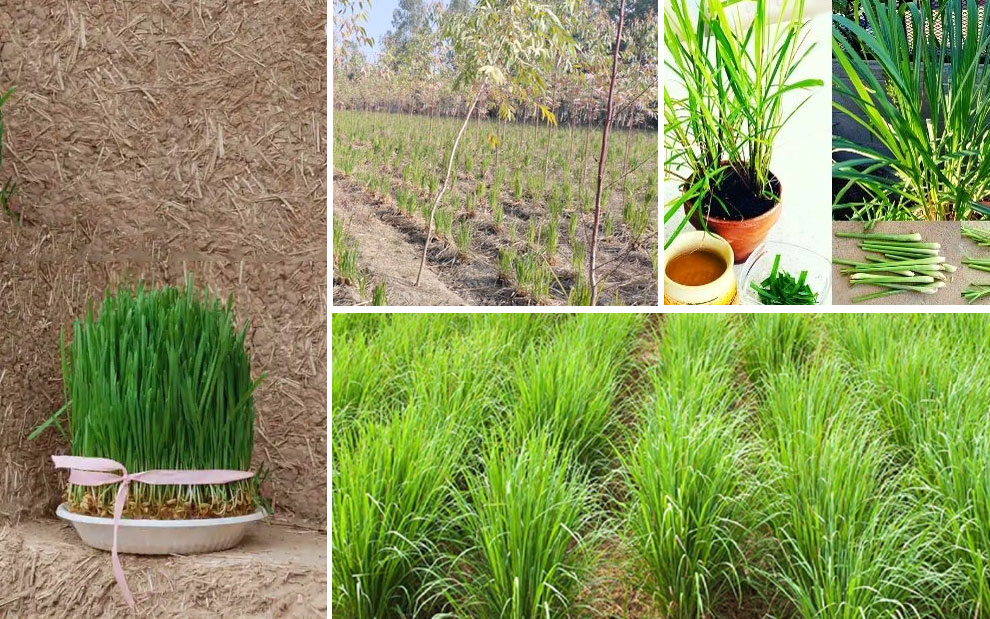
Native to the tropical regions of Southern India and Sri Lanka, lemongrass loves constant heat. Thus, it grows best in containers in most parts of America and Europe, where you can move them to the sunniest regions in the garden and indoors or to a greenhouse when the temperature drops.
Are you wondering how to grow lemongrass from seeds? If yes, look no further, as this detailed guide below will teach you everything you must know to cultivate this medical herb in your garden or yard.
Ideally, lemongrass is easy to grow, regardless of your propagation method. Keeping it in a container is a viable method of ensuring easy maintenance during colder months.
To grow it via seeds, you may start the lemongrass seeds in a tray not placing them too deep. Lightly mist them and cover the tray with a wrap and place it in ample sun for germination.
Lemongrass is a lemony, sweet herb native to tropical regions. Its stems are widely employed in Asian cooking and can be used in fish or meat dishes. Lemongrass also works in curries. You can use the lemongrass leaves to achieve a refreshing and delicious tea.
It is a herb widely employed in the kitchen for its sweet yet citrusy scent and flavor. Since it is native to the tropics, it does not require any protection from the cold. Beyond its phenomenal culinary value, lemongrass also makes for an attractive plant for your small vegetable garden.
Regardless, the process is easy and demands only minimal effort. This guide will detail the complete process of growing lemongrass from seeds.
Lemongrass Overview
| Scientific Name | Cymbopogon citratus |
| Family | Poaceae |
| Type | Perennial, annual, herb |
| Height | Two to four feet |
| Width | Two to three feet |
| Sun | Full sun |
| Soil | Loamy soil with neutral pH |
| USDA zones | 10 through 11 USDA |
| Native | Asia |
| Toxicity | Toxic to pets |
Is Lemongrass Easy To Grow From Seed?
Lemongrass is easy to grow if you know how to plant lemongrass seeds. However, for the lemongrass to grow well, you must expose it to the right conditions. Simply put, the plant loves the sun and warmth. The plant needs at least six hours of sun per day.
However, since lemongrass loves heat, it is susceptible to dehydration. Hence, water it well and deep daily. In no circumstances should you let its roots dry out. To ensure stable growth, you must ensure that the plant receives a steady moisture supply.
You can harvest the lemongrass as soon as they become 12 inches tall and the stem’s base is at least 0.5 inches thick. In a single growing season, the plant can acquire a three to five feet height with a two feet width.
How Many Lemongrass Seeds To Plant?
Depending on the available space and your fondness for this herb, you can choose how many lemongrass seeds you wish to plant. However, since the plant needs to grow, you must leave adequate space between the two plants.
So, space the seedlings at least twenty-four inches apart when growing in the garden. Alternatively, you can grow them in a container, keeping only a single seedling in every five-gallon container.
How To Grow Lemongrass From Seeds?
Here is a detailed process of growing lemongrass from seeds:
1. Pick a suitable variety
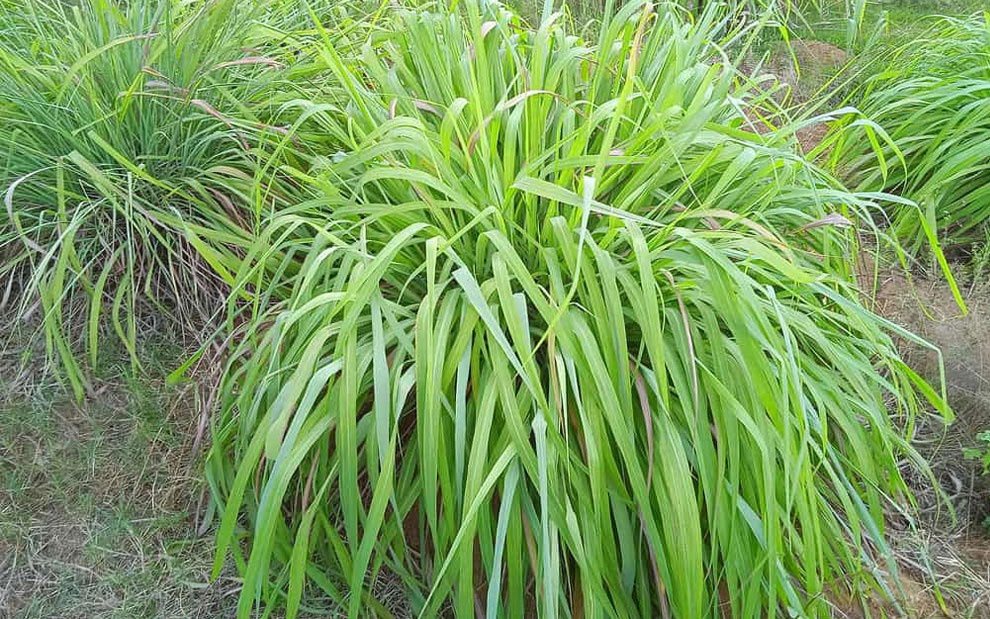
If you wish to employ lemongrass for cooking, please be careful with the variety you select for your kitchen garden. Most people love West Indian lemongrass for cooking. However, you can also try East Indian lemongrass because it is edible.
When shopping from a store, please do not pick the Citronella grass, even though it is marketed as a lemongrass variety. Even though the two look similar and are both edible, the Citronella grass does not belong to the geranium family.
You can tell them apart as the citronella grass has a red tint at the base, whereas the lemongrass has yellowish-green color and a white base.
2. Plant the lemongrass (in a seed tray and transplant it to the ground)
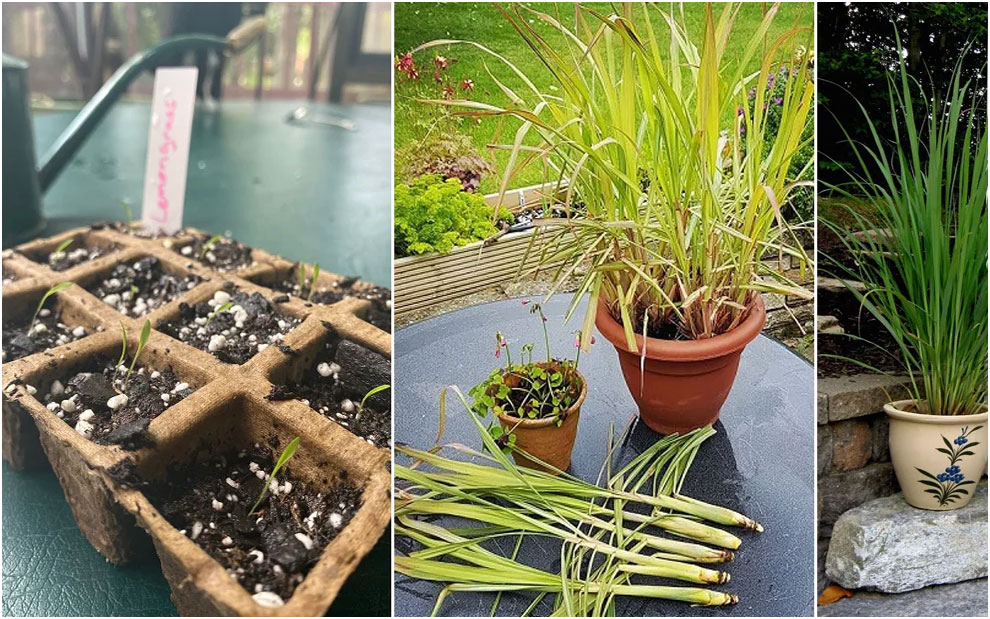
- Take a seed tray with a well-draining, moistened medium mixture comprising equal parts coconut fiber fine, cocopeat, and compost.
- Sow the seeds one inch apart, ¼-inch deep into the soil, and cover them, so they get a moist and warm environment to germinate.
- Mist them regularly using spray water.
- Stretch the plastic covering onto the seed tray and seal its edges.
- Move the tray to a windowsill that gets excellent lighting throughout the day.
- Every week remove the seal and water the lemongrass seeds. You should mist the soil till the top 1 or ½ inch is moist.
- Germination will take ten to thirty days.
- After the seedlings show, you can remove this covering and move them outdoors into the ground, where they get full sun and excellent growing conditions.
3. Plant the lemongrass (directly into the ground)
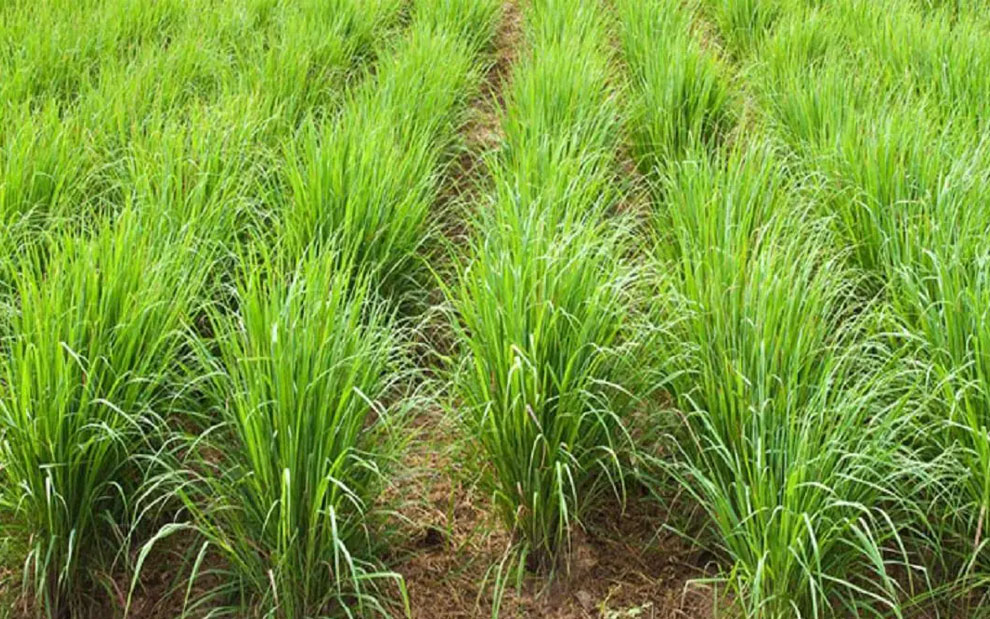
- To direct the seeds into the ground, wait until the frost danger has ended.
- Pick a spot with nitrogen-rich, well-draining soil that receives full sun.
- Plant individual seeds at least six inches apart.
- Put only a sprinkling of the soil onto the seeds, as they need ample light for germination.
- Usually, germination will take three weeks, so keep the soil moist during this time.
- After the seedlings are a few inches tall, you can thin the individual plants and grow them two feet apart. Alternatively, you can also transplant them to another location.
What Month Do You Plant Lemongrass?
You can plant lemongrass in summer or spring when the temperature is warm.
How To Germinate Lemongrass Seeds?
For the lemongrass seeds to germinate, they should have access to the right growing conditions. Here’s what your plant needs:
A. Soil
Lemongrass thrives in a slightly sandy but loamy soil. It is the soil prevalent in a tropical region where lemongrass is most prevalently grown. You can start with the available soil and add well-rotted animal manure, compost, little sand, and leaf mold to meet the requisite soil conditions.
Lemongrass thrives in well-drained, fertile soil. It will not grow well in compacted or soggy soil conditions.
B. Sun
The plant needs the sun for at least seven to eight hours daily. Hence, ensure that you plant it in a spot that receives direct but bright sunlight. Lemongrass grown in the shade is susceptible to diseases and pest attacks. They also show poorer growth.
C. Temperature
Lemongrass loves tropical and warm temperatures for productive and healthy growth. During spring, at night, when the temperature is around 60 degrees Fahrenheit, you have the ideal condition to plant the lemongrass.
You can grow them in-ground in a region that has a mild winter. However, in areas susceptible to cold weather, you must treat the lemongrass as an annual or grow them in a container.
Hence, during winters, when the temperatures are in the 40s, you must take steps to overwinter the plant. So, bring the lemongrass pots indoors before the first frost in fall.
D. Humidity
Lemongrass cherishes 70-80 percent humidity. Hence, on the drier days, you must have a humidifier handy,
E. Fertilizer

Lemongrass is an ornamental grass. You must feed it a nitrogen-rich fertilizer to yield the best top growth. Consider using a 6-4-0 slow-release fertilizer. You can choose synthetic or organic plant food that can provide lemongrass with the necessary nourishment across the growing season.
Mix half cup of 6-4-0 plant food into the soil when planting it and follow it with a side-dressing once in thirty days.
Using seaweed solution or manure tea for watering lemongrass once a week is ideal for keeping the plant nourished and hydrated. It also betters the soil structure.
You can make compost or manure tea by following the steps below:
- Add 1 cup compost or manure to a cheesecloth by tying its end together to form a teabag.
- Insert this teabag in the five-gallon water bucket and keep it in the sun for two to three days.
F. Water
Lemongrass is not drought-tolerant. Hence, ensure that the seedlings grow in moist soil. But as the plant establishes, it can withstand brief drought periods. Ideally, you must water the plant anytime the topsoil feels dry to the touch.
Lemongrass loves well-drained soil and full sun. You must soak the seeds for at least a day in warm water. It is necessary to facilitate quicker germination. After you take the seeds from the water, you must know how to sow lemongrass seeds.
So, carefully plant the seeds in a moist potting mix and gently press them into the soil. Do not exert too much pressure. Germination will occur in two to three weeks, provided you do everything correctly.
After the seedlings sprout or are a few inches tall, you can transplant them into larger pots or gardens, depending on where you want their permanent abode.
Pruning The Lemongrass
Pruning the lemongrass is not tricky. As a general rule, chop off all the yellow or brown leaves. After this, trim any leggy or long stems to facilitate new growth. Lastly, prune any damaged or dead stems or leaves.
You can trigger new growth by ensuring the lemongrass does not get top-heavy and performing a few quick snips. Pruning is one of the best ways to get some lemongrass cuttings and use them to grow new plants.
Harvesting Lemongrass
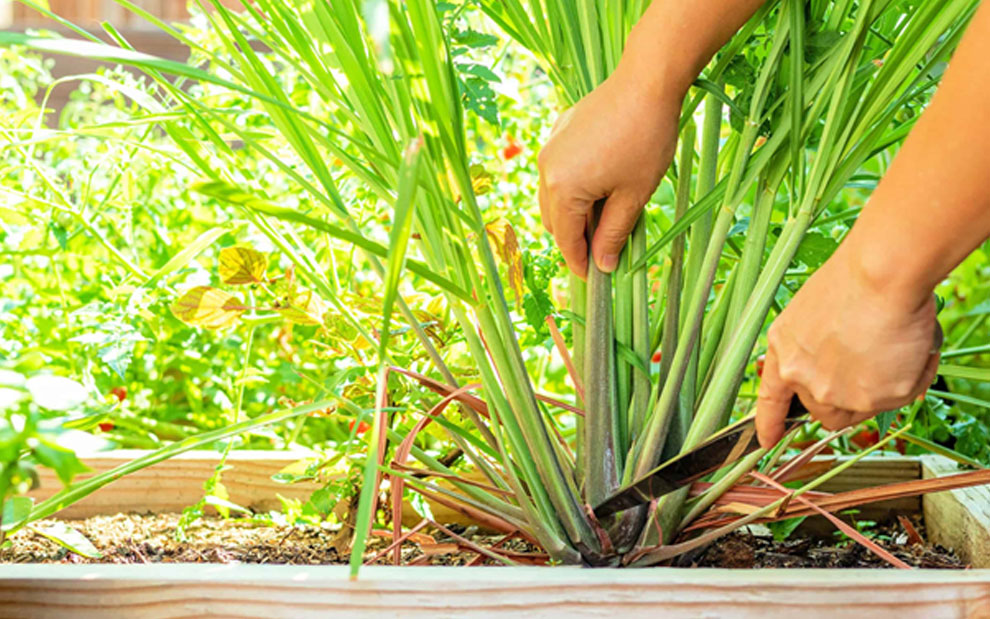
After the lemongrass is well-established and shows several healthy stalks, you can harvest the leaves and the stalks. Sadly, this plant has a brief growing period. Hence, most of it. But fortunately, you can preserve lemongrass and enjoy them in colder months.
You can harvest the lemongrass when its stalks are at least ½ inch thick, 18 inches tall, and develop a dark green hue. Harvesting is easy. You have to snip the complete stalk at the base. While harvesting, please wear gloves because the stalks tend to irritate the skin.
Once the growing season ends, you can trim lemongrass plants to around six inches tall. Simultaneously, you must end fertilizing and reduce the watering. Now, you must water solely to ensure that the soil is moist.
During this while, you must move your plant to a spot where it is guarded against the frost. New spring growth will show in the plant when the winter is over. Now, you can resume the feeding and watering schedule.
How Long Does It Take To Grow Lemongrass From Seed?
If you know how to plant lemongrass seeds and grow them in a favorable climate, your plant will be ready for harvest in approximately seventy-five to hundred days from the sowing date and will continue to grow until the first frost in fall.
However, how fast does lemongrass grow from seed will be relatively longer. If you grow lemongrass from supermarket-bought stems or via small plants, you do not have to wait for the seeds to germinate and hence the harvest time is shorter.
When the plant becomes too large, you can divide it as you would commonly do with a herbaceous perennial. Doubling the lemongrass plants is easy.
What Is The Best Way To Grow Lemongrass?
It is ok if you do not want to grow lemongrass from seeds. There are two other quicker and better ways to grow lemongrass. These include:
A. Propagation from shop-bought stalks
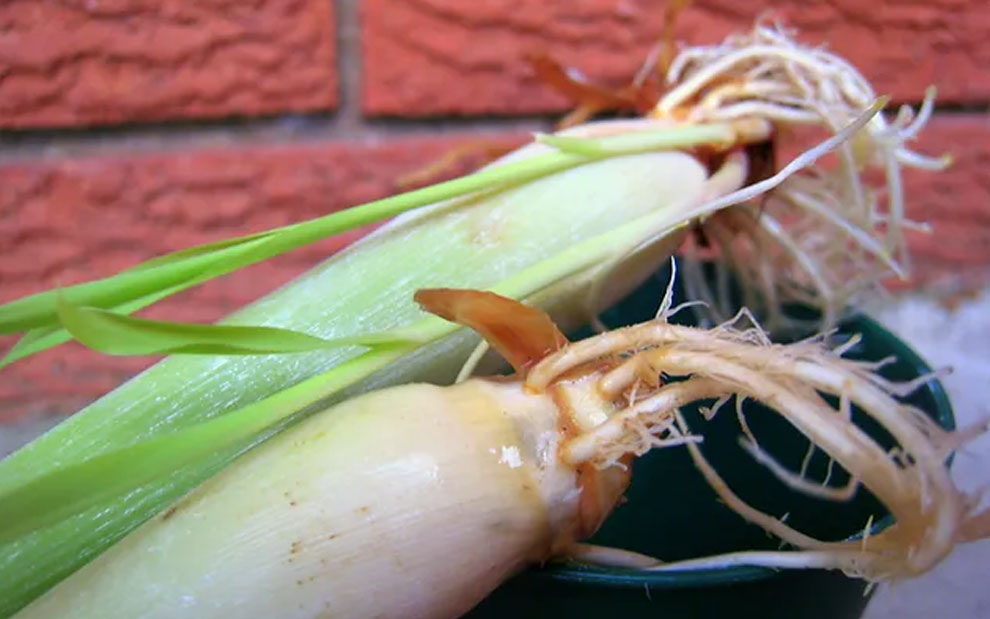
You can easily and quickly grow lemongrass from shop-bought roots. However, please pick only the fresh and firm stems as they have the best chances to thrive. Once purchased, follow the steps below:
- Insert this stem in a glass of water, ensuring the white, thick part is dripped in water.
- Keep this glass on a windowsill.
- Every couple of days, change the water in the glass to keep bacteria at bay.
- In a few weeks, you will see the roots showing.
- After your roots are a few inches long, move the plant to the compost pots and keep them near the window for better growth.
- Water regularly and feed the plant with a seaweed fertilizer every two weeks.
- Once the threat of the first frost ceases, you can move your plant outdoors.
B. Propagation from divided plants
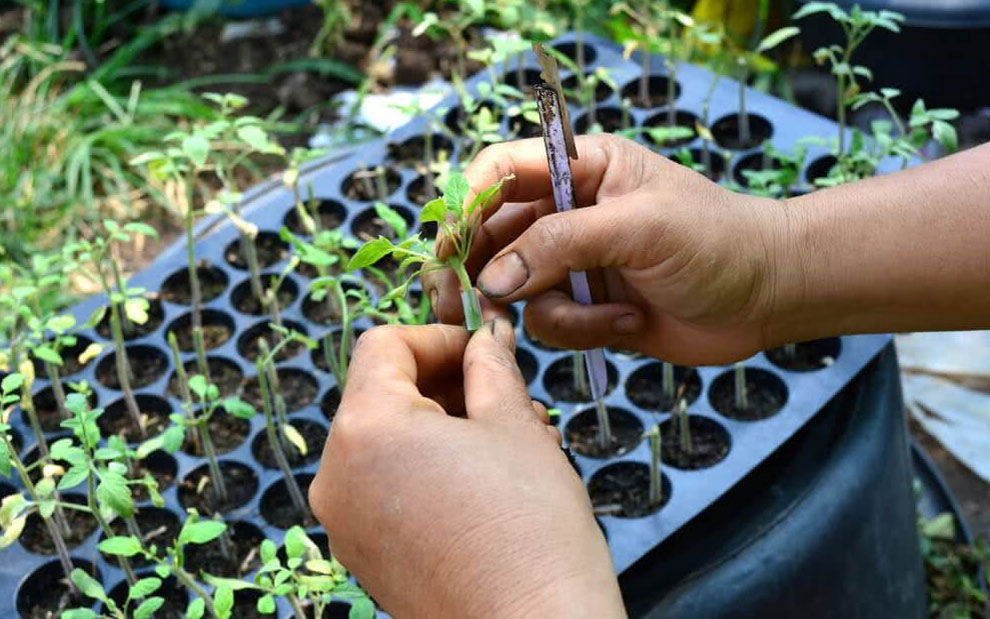
You can also grow lemongrass by dividing the mature perennials. The best time for division is during the spring. Lemongrass is a clumping grass. It means that it grows several stalks at the base. You can divide these stalks and grow them in different locations. Follow the steps for propagation by division:
- Separate some stalks from the primary clump. The easiest way to do this is to firmly catch hold of the stem and pull it till it separates from the rest of the plant. If the roots seem tangled or twisted, you must employ a knife to separate them, ensuring the roots are intact on the stalk for replantation.
- Alternatively, you can dig a whole plant and separate the stalks with a knife or your hands.
- While dividing, ensure that it must have a stalk with the roots in place.
- Once separated, you can plant the divisions at least two feet apart in your preferred spot. Ensure that the area has well-aerated, nutrient-rich soil and receives full sun.
Propagating lemongrass through these methods is better and quicker than learning how to grow lemongrass from seeds.
Related: How to grow cherry tomatoes from seeds? | How to grow celery from seeds? | How to grow avocado from seeds?
How To Harvest Lemongrass Seeds To Grow Later?
Once the growing season is over, the flowers appear in the fall and the seeds will also show during the winter. Please note you can only harvest the seeds if you give them the right conditions to thrive. You must wait until the flowering is over and the seeds appear to harvest the seeds.
Chop the seed heads from the plant and hang them by the stalks to dry. Back in the day, people would harvest lemongrass seeds by bashing the seed heads against the floor. This process may seem challenging to many.
But fret not. You can easily find lemongrass seeds in a nursery near you. Alternatively, you can also shop for them online from a reliable store.
